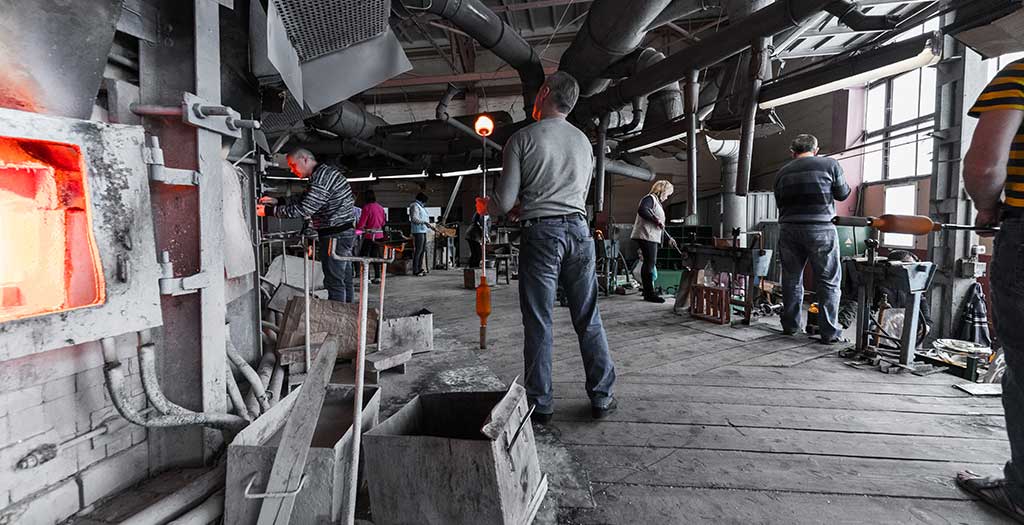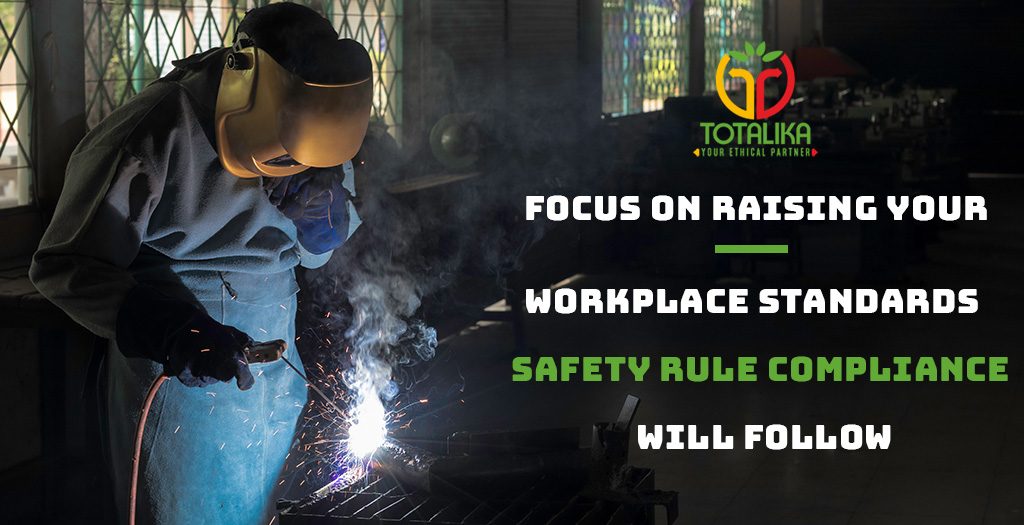Focus on Raising your Workplace Standards – Safety Rule Compliance will Follow
Have you ever noticed that some workplaces work seamlessly without any rules? What’s their magic? How do they ensure that all employees work efficiently, without compromising on safety? What’s the trick? Let’s find out.
Rules are Rules
All workplaces have safety rules. Wear hard hats while on the factory floor. Do not remove machine guards. Always wear safety gloves, overalls, and boots. Explosives – do not touch.
The rules are endless and vary from one workplace to another. Whether you love them or hate them, safety rules are a must for all workplaces and are here to stay. Safety rules apply to all – from factory floor workers to senior managers.
But, the problem arises when workplaces focus more on the semantics of the safety rules, rather than on the reasoning behind the rules.
Let’s say, you impose a fine on all employees who don’t wear hard hats on the factory floor. There are bound to be employees who disagree with your rule and try to go behind your back. They are likely to avoid wearing hats when there are no supervisors in the workplace or find other ways to dodge the rule.
The better approach here is to – explain the reasoning behind the rule. Without a hard hat, employees can be hit by objects that fall from the upper floors accidentally. Once employees understand the reasoning behind the rule and why it was introduced in the first place and the benefits they get from it, they are more likely to follow the rule.
Why Do Employees fail to buy into Workplace Rules?

The reason that the majority of workplaces enforce rules without giving thoughts to the reasoning behind it is that rules are easy to implement. There’s no need to have a delicate conversation with the employee. Rules are rules. There’s no room for error or change. An employee cannot question a workplace rule, just like an employee cannot disobey a senior’s order.
When safety rules are implemented in such a cold way, employees fail to connect with the rules. They are always looking for ways to circumvent rules.
And, safety rules are reduced to being just paperwork. This makes it difficult for employees to warm up to these rules.
Why Simply Enforcing Rules Never Work?

You need to transition your safety mindset. Remember that employees don’t warm up to rules but to workplace standards.
Different employees have varying work standards in the workplace. For instance, few people do the bare minimum, so that they don’t get fired. On the other hand, there are the exceptional employees who go beyond the responsibilities of their job, leaving a positive impression on the minds of others. Some people put forth their best regardless of their supervisors, while others need an external push to deliver their best.
Just like no two people live the same life, no two people can have the same workplace standards. So, when you try to enforce safety rules at work, some resist because they have a different workplace standard that what is expected.
This is why enforcing rules at work never work. You need to take a different strategy.
Focus on Raising Workplace Standards

The better way to get your employees warm-up to workplace rules is to raise workplace standards. Replace rules with a focus on creating standards for your entire team.
Start by defining the standard you expect from your team. Be clear about how you want employees to act, think, communicate, and work. Explain the standards to your team members. Instead, of just making it a one-way talk, provide employees with the opportunity for input. This will give you an idea of their feedback and what they expect from management, opening the path for various opportunities.
While speaking about workplace standards, there is one element that you have to watch out for. Some of your workplace employees may not like to rise to higher standards. They are likely to resist, complain, or even find faults with the standards.
Instead of giving in to their demands, be patient. Remember that high performers hate low standards, and low performers hate high standards. High performers feel that low standards lead to boredom, low workplace challenges. When they don’t feel challenged enough, they are likely to move somewhere else. On the other hand, low performers feel that high standards keep them on their toes at all times.
However, remember that once a standard is set, there is no going backward. Set standards for your team. Be specific on how you want team interactions to happen. Set standards for work. Be specific on what needs to be done. Instead of just focusing on the workplace rules, focus on the output you want to gain.
Finally, remember that when you focus on raising workplace standards, safety rule compliance will come naturally.

